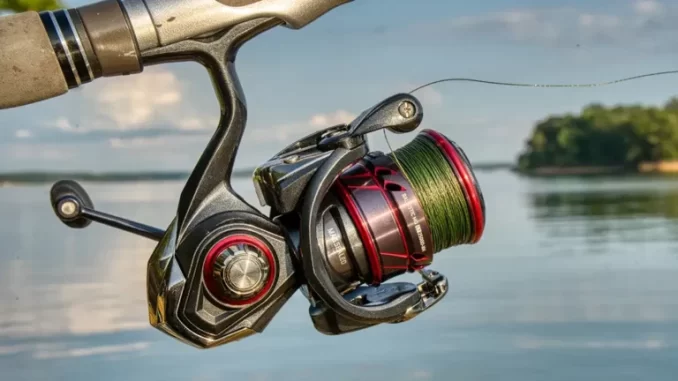
Having the right equipment can make all the difference when it comes to fishing. One such essential tool is the spinning reel, a versatile and widely used fishing reel that offers numerous advantages for anglers of all skill levels. In this article, we delve into the intricacies of spinning reels, exploring their function, key features, benefits, and how to choose the perfect one for your fishing needs.
Understanding Spinning Reels: Function and Mechanics
A spinning reel, also known as an open-face reel, is a fishing reel characterized by its user-friendly design and efficient casting mechanism. Spinning reels are relatively easy to operate, unlike baitcasting reels, making them an excellent choice for beginners and seasoned anglers.
Components of a Spinning Reel:
Body (Housing): The body of a spinning reel is typically made from materials like aluminum, graphite, or a combination of both. Modern designs prioritize lightweight yet durable materials, allowing for easy use and extended longevity.
Spool: The spool holds the fishing line and is designed to release the line smoothly during casting and retrieve it evenly during reeling. Spools are often constructed from aluminum or graphite to balance strength and weight.
Handle: The handle retrieves the fishing line and the caught fish. Handles can be reversible, allowing left- and right-handed anglers to use the reel comfortably.
Bail: The bail is a metal arm that flips open and closed. It guides the fishing line onto the spool during retrieval and ensures proper line management while casting.
Drag System: The drag system controls the resistance to the fishing line when a fish pulls. This prevents the cable from breaking and allows anglers to tire out the fish gradually.
Anti-Reverse Switch: This switch prevents the handle from turning backward, keeping the tension on the fishing line consistent during the retrieve.
Benefits of Spinning Reels:
Ease of Use: Spinning reels are known for their user-friendly design, making them ideal for beginners. The casting mechanism is less susceptible to backlash, reducing the frustration associated with baitcasting reels.
Versatility: Spinning reels can handle various fishing techniques, from finesse fishing to heavy-duty saltwater angling. They can accommodate multiple line types and sizes, allowing anglers to target diverse fish species.
Casting Distance: The design of spinning reels allows for long and accurate casts, making them suitable for situations where reaching distant or precise spots is crucial.
Less Line Twist: Spinning reels release the line from the spool to minimize line twists, which is especially important when using lightweight lures or delicate fishing lines.
Affordability: While high-end spinning reels are available, they generally come in a wide price range, making them accessible to anglers with different budgets.
Choosing the Right Spinning Reel:
Size and Capacity: Select a spinning reel size that matches the type of fishing you’ll be doing. Smaller reels are suitable for light freshwater fishing, while larger ones are better for heavy saltwater applications.
Materials: Consider the materials used in the reel’s construction. Higher-end models often feature corrosion-resistant materials, which are crucial for saltwater fishing.
Drag System: A smooth and adjustable drag system is essential for fighting powerful fish. Look for reels with a well-engineered drag mechanism.
Gear Ratio: The gear ratio determines how quickly the line is retrieved. Higher gear ratios (e.g., 6:1) are suitable for fast retrievals, while lower ratios (e.g., 5:1) offer more torque for reeling in larger fish.
Ball Bearings: More ball bearings generally result in smoother operation. Look for reels with sealed or shielded bearings to prevent water and debris from affecting performance.
Maintenance and Care:
Proper maintenance is crucial to ensure the longevity and performance of your spinning reel. Regularly clean your reel, lubricate moving parts, and inspect the wear line. After each fishing trip, rinse the spin with fresh water to remove salt and debris.
Conclusion
The spinning reel stands as a versatile and accessible tool in the world of fishing. Its user-friendly design, casting efficiency, and adaptability to various fishing techniques make it a favored choice among anglers. By understanding the components, benefits, and factors to consider when choosing a spinning reel, you can enhance your fishing experience and increase your chances of landing that prized catch.

Leave a Reply